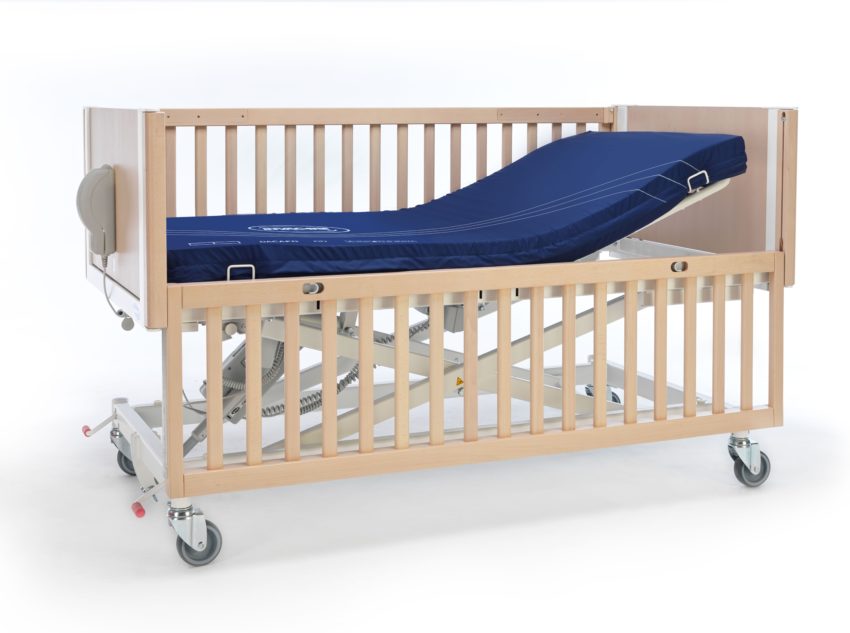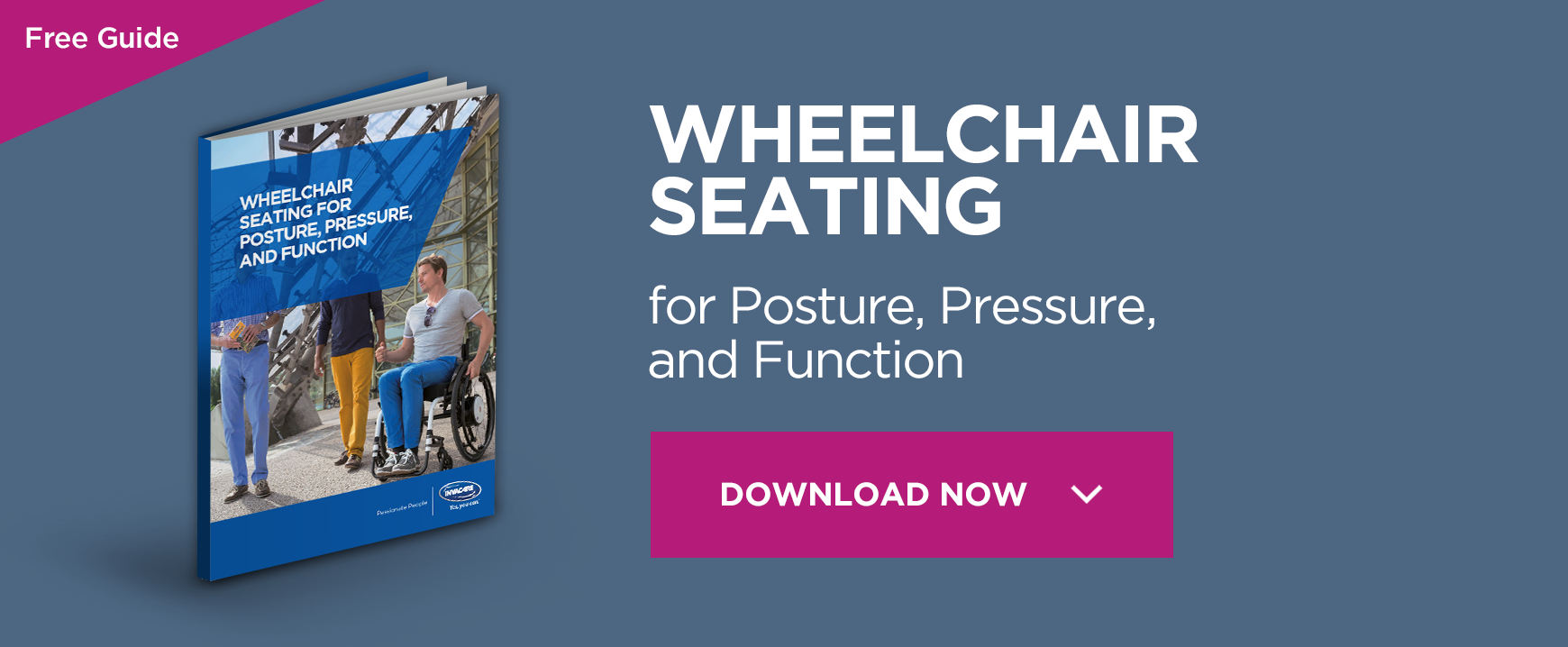What Are Adjustable Beds and Could You Benefit From One?

Have you ever been interested in owning an adjustable bed? Have you heard of them and perhaps want to know more about their benefits and their drawbacks? Read on to learn more about accessible bed options.
What is an adjustable bed?
An adjustable bed is a bed which has the capability to be moved and manipulated into various positions, usually via the use of an electrical remote control. Traditionally, adjustable beds are often used by those who tend to spend a lot of time in bed due to disabilities, age and/or health conditions.
The main points at which an adjustable bed can be altered are usually the top of the bed – where the head rests – so that users can be ‘propped up’ or placed in a more comfortable seated position, and also at the area usually positioned behind the knees – which is perfect for when a user wants to raise their legs higher.
Ultimately, the adjustable bed offers the user the opportunity to lay in positions which are alternative to just lying flat on one’s back, or side. Adjustable beds also tend to have features which allow for the bed to be raised or lowered, depending on the needs of the user and any care-giver they may have.
Should you consider an adjustable bed?
If you or someone you care for is having difficulty getting in and out of bed then it may be time to consider getting an adjustable bed. The same can be said for those who are finding themselves needing to spend an increased amount of time in bed. An adjustable bed can help to make that time a little more comfortable, as well as offer a safer profiling way to enjoy meals and drinks whilst in bed.
What are the benefits of using an adjustable bed and where to get yours?
- Comfort – When thinking about adjustable beds, the main benefit that quickly becomes apparent surrounds the issue of comfort. The adjustable bed offers the user an array of varying positions to rest in. Ranging from sitting up straight with the users legs out in front of them, to propped back in a slightly reclined position with the users legs supported behind the knees. The customisation of the preferred bed position is perfect for when an occupant is awake, yet remaining in bed.
- Eating and Drinking – There’s also the obvious benefit of being able to serve meals to a person whilst they remain in bed. If a user is unable to transfer out of the bed, then at least having an adjustable bed which has a backrest which raises, is an adequate workaround for when the user is eating and drinking. The same too can be said for when other people are in the room with the person who’s in bed, as it is likely that the occupant of the bed would much rather be sitting upright and alert – so that they may engage in conversation a little easier.
- Day-to-day Activities – The same functionality can be said for those who enjoy reading, watching television, or catching up on a little work. Being able to remain in bed whilst sitting upright – all at the push of a button – is certainly an accessibility feature which many are grateful for.
- Transferring Out of Bed – For those who can transfer out of bed, but who have limited mobility, the adjustable bed can also act as a brilliant aid for those who need to be sitting upright in order to get up out of bed. By pressing a button and raising their upper body, a person can then swing their legs off the bed and proceed to leave bed safely.
- Assisting Care-Givers – Finally, another major benefit of the adjustable bed comes in the form of assisting caregivers. If a person has a carer, then having an adjustable bed can help with proceedings massively. For daily routines such as changing and cleaning, having a bed which can be raised several feet can help to make any care-giving tasks more efficient and dignified – all the while, helping care-givers to avoid work-place injury such as repetitive strain injury and bad backs due to poor posture.
One bed example can be Invacare Medley Ergo Medical Bed. the Medley Ergo range can be folded down and easily transported. It also “reduces shear and friction, increases comfort when sitting, minimises the risk of slipping downwards during profiling, and it is optimised for shorter and unstable patients”. If safety is a main component for any potential user, then the Medley Ergo certainly has that aspect covered – as well as its ease of transportability.
Another example can be the Invacare Octave Bariatric Bed for bariatric patients. The Octave Bariatric offers sturdiness and security, whilst being complimented with a beautiful Scandinavian design style. Octave Bariatric also leads the way in terms of optimised control options – with an easy to use control panel which allows the user to adjust height and profiling position, effortlessly.
Be sure to check out the Invacare website yourself to find out more about the adjustable beds mentioned above and about other adjustable beds and bedding equipment that the company has to offer.
How do you maintain an adjustable bed?
There are a number of tips and pieces of advice for when it comes to maintaining your adjustable bed. These include the following:
- Mattress Rotation – it’s important to remember to rotate the mattress on the bed frame at least once per month. This is due to the fact that a large amount of a person’s weight is centred on a small area of the mattress (usually where the torso is). This means that a lot of pressure is applied to this one singular area of the mattress and so to eliminate any potential problems arising from this, rotating the mattress can help.
- Check Wiring and Electronics – by checking any wiring and electrical components of the adjustable bed, regularly, you will be able to spot any damage or causes for concern long before they become a major hazard. Any loose wiring, or fraying of the electrics, can either be fixed by a professional, or a care-giver if they know exactly what to do.
- Check for Structural Damage – much like checking for any electrical faults, checking to see if there is any mechanical/structural damage can also ensure issues do not progress and get worse. It would be good practice to check the structural integrity of the adjustable bed at least once every couple of weeks. It doesn’t have to be a major deep-dive of a check – a simple once over should do the trick.
Aside from all this, a yearly health check of the adjustable bed is also advised. Either by the manufacturer (if they offer this service) or by an occupational therapist/health professional.
Is adjustable bed covered by insurance?
If you’ve decided it’s time to get an adjustable bed for yourself you may be wondering how you may go about getting funding for it.
In the UK, for example, some counties and their respective health boards will assess a patient’s needs and if an adjustable bed is deemed to be something which the patient requires, then the local authority may loan them an adjustable bed through Occupational Health. A decision upon what an individual needs may be, will be made by an Occupational Therapist. To be referred to an Occupational Therapist, it’s best to speak with your doctor about any changes in your care requirements.
Failing this, there are also several charities across the UK and in mainland Europe – such as The League of the Helping Hand (LHH) – which could be able to provide some financial assistance for those experiencing hardship. The grants which the LHH can be used to purchase mobility aids, such as adjustable beds in this instance.
Depending on where in the world you are reading this, you may need to search online for your respective local authorities and charities – to see what funding opportunities are available in your area.
If one of the main reasons you’re looking to get an adjustable bed is due to pain and discomfort, then perhaps you’ve considered seeing a specialist. Check out our article on Chiropractors and Osteopaths to see what the difference is and whether or not they could assist you.







